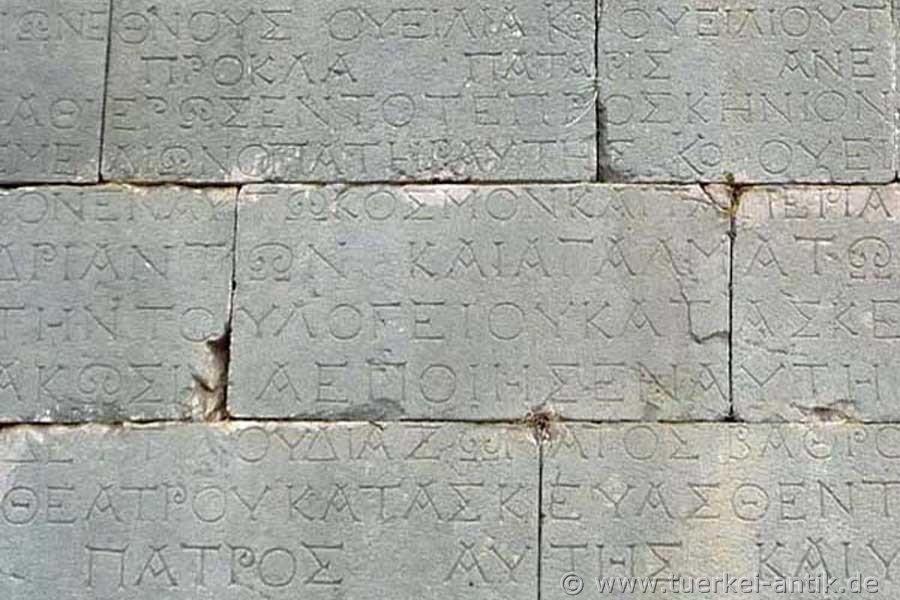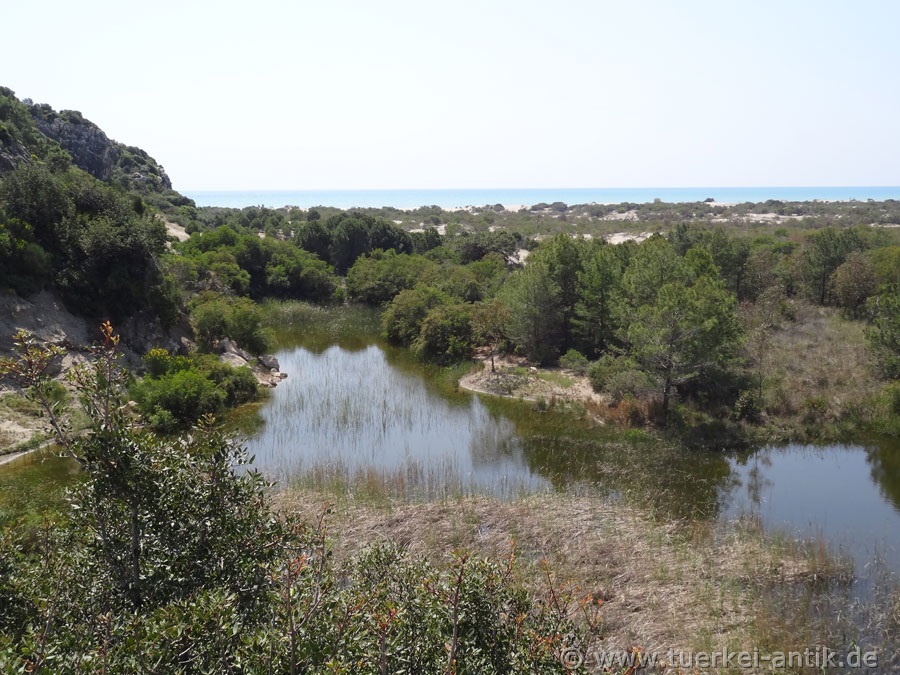 |
| Patara | |||
|
|
|
||
| The Triumphal Arch of Mettius Modestus | |||
|
Patara was once the most important port of Lycia and the birthplace of St. Nicholas, later Bishop of Myra. Today Patara is famous for its 5 km long, fine sandy beach, one of the few breeding sites of the sea turtle Caretta Caretta. Fortunately, measures have been taken to ensure that the eggs are not crushed. No one is allowed on the premises at night. |
|||
|
|
|||
| The Bouleuterion (City Hall) | |||
|
Since the 6th century B.C. Patara was one of the six largest cities of the Lycian League. Since Alexander the Great Patara belonged to the sphere of influence of the Hellenistic empires and was an important naval base in the Diadoch wars. Ptolemy II temporarily renamed her Arsinoe. In Roman times, Patara retained its leading position in Lycia; it was Metropolis and the seat of the governor of the province of Lycia et Pamphylia. The apostle Paul stayed in Patara during his third missionary journey (53-58 AD). |
|||
|
|
|||
| Temple for the Cult of the Emperor | |||
|
In front of the marshy harbour basin only the remains of the city wall, the thermal baths and a Corinthian temple can be seen today. |
|||
|
|
|||
| The harbour street | |||
|
|
|||
| The now marshy harbor basin | |||
|
The port of Patara, which - as can still be seen today - stretched for about 2 km inland, has been slowly silting up since antiquity. This was done by continuous sand precoating of the nearby, fast flowing river Xanthos and formation of shifting dunes. The harbour was probably finally abandoned in the Middle Ages (13th century). Systematic excavations of the city have not yet taken place. In the area you can see the remains of larger buildings: a Roman triumphal arch with three passages, baths, a theatre, a granary of Hadrian's time and two aqueducts. |
|||
|
|
|||
| The Granarium (Grain Stores) | |||
|
During the Roman Empire, Patara was one of the most important harbours for the cereal fleet from Egypt alongside Andriake, first for Rome and increasingly for Constantinople from the 4th century AD. Under Emperor Hadrian a large granary was built around 130 AD on the western side of the harbour to store the grain. During the Granarium of Andriake, which was very well preserved and extensively restored in the years 2012 to 2014, the much more dilapidated granary of Patara takes a sadder picture. Not least due to the large number of largely preserved buildings in Patara and its location on the opposite side of the harbour, the building is hardly noticed by visitors. |
|||
|
|
|||
| The Theatre | |||
|
The (originally Greek) theatre of Patara was only completely freed from the sand in the years 2002 to 2004.
The beginning of the theatre construction and the first excavation of a cavea from the town hill (today Kurşunlutepe) can be dated to the 3rd to 1st century BC. Under the Roman Emperor Hadrian (117 - 138 AD) the stage house was erected, the cavea extended upwards and provided with a sun sail.
|
|||
 |
|||
| Inscription on the stage house of the theatre | |||
|
|
|||
| The lighthouse | |||
|
At the entrance to the port of Patara stood a lighthouse from Roman times. The lighthouse built under Emperor Nero is the only antique lighthouse in the world that has been largely preserved in its original state - i.e. without later conversions. It should correspond exactly to the antique representations. After thousands (from 4 to 6 thousand) truckloads of sand were removed, it turned out, to the delight of archaeologists, that most of the tower's stones are still present. Since all stones have fallen in one direction, the archaeologists suspect that a tsunami has overturned the tower. An earthquake would have scattered the stones. |
|||
| Photos: @chim | |||
| Translation aid: www.DeepL.com/Translator | |||
| Source: Wikipedia and others | |||
|
|
|||


